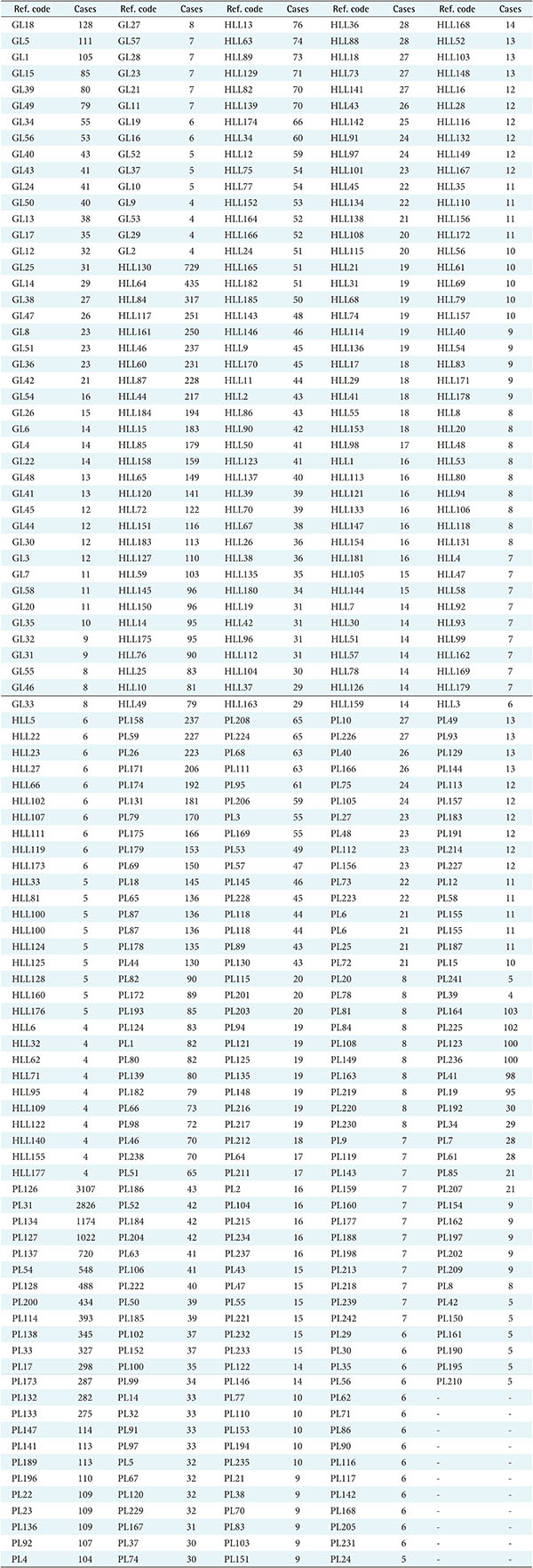1. Newman ME. The structure of scientific collaboration networks. Proc Natl Acad Sci U S A. 2001; 98(2):404–409.

2. Malik HA, Mahmood N, Usman MH, Rziwan K, Abid F. Analysis of airport network in Pakistan utilizing complex network approach. Int J Adv Comput Sci Appl. 2019; 10(1):404–410.

3. Malik HA, Mahmood N, Usman MH, Abid F. Unweighted network study of Pakistani airports. In : Proceedings of 2019 2nd International Conference on Computing, Mathematics and Engineering Technologies (iCoMET); 2019 Jan 30–31; Sukkur, Pakistan. p. 1–6.
4. Malik HA, Abid F, Gilal AR, Raja AS. Use of cloud computing in Hajj crowed management and complex systems. In : Proceedings of 2017 4th IEEE International Conference on Engineering Technologies and Applied Sciences (ICETAS); 2017 Nov 29–Dec 1; Salmabad, Bahrain. p. 1–5.
5. Malik HA, Mahesar AW, Abid F, Wahiddin MR. Two-mode complex network modeling of dengue epidemic in Selangor, Malaysia. In : Proceedings of the 5th International Conference on Information and Communication Technology for the Muslim World (ICT4M); 2014 Nov 17–18; Kuching, Malaysia. p. 1–6.
6. Kim PS, Lee PP, Levy D. Basic principles in modeling adaptive regulation and immunodominance. In : Ledzewicz U, editor. Mathematical methods and models in biomedicine. New York (NY): Springer Science & Business Media;2013. p. 33–57.
7. Malik HA, Abid F, Wahiddin MR, Bhatti Z. Robustness of dengue complex network under targeted versus random attack. Complexity. 2017; 2017:2515928.

8. Barabasi AL, Bonabeau E. Scale-free networks. Sci Am. 2003; 288(5):60–69.

9. Pastor-Satorras R, Vazquez A, Vespignani A. Dynamical and correlation properties of the internet. Phys Rev Lett. 2001; 87(25):258701.

10. Massad E, Ma S, Chen M, Struchiner CJ, Stollenwerk N, Aguiar M. Scale-free network of a dengue epidemic. Appl Math Comput. 2008; 195(2):376–381.

11. Malik HA, Mahesar AW, Abid F, Waqas A, Wahiddin MR. Two-mode network modeling and analysis of dengue epidemic behavior in Gombak, Malaysia. Appl Math Model. 2017; 43:207–220.

12. Uddin S, Murshed ST, Hossain L. Power-law behavior in complex organizational communication networks during crisis. Physica A Stat Mech Appl. 2011; 390(15):2845–2853.

13. Soewono E, Supriatna AK. A two-dimensional model for the transmission of dengue fever disease. Bull Malaysian Math Sci Soc. 2001; 24(1):49–97.
14. Pessanha JE. Risk assessment and risk maps using a simple dengue fever model. Dengue Bull. 2012; 36:73–86.
16. Coutinho FA, Burattini MN, Lopez LF, Massad E. Threshold conditions for a non-autonomous epidemic system describing the population dynamics of dengue. Bull Math Biol. 2006; 68(8):2263–2282.

17. Malik H, Waqas A, Abid F, Gilal A, Mahessar A, Koondar Y. Complex network of dengue epidemic and link prediction. Sindh Univ Res J (Sci Ser). 2016; 48(4):845–848.
18. Massad E, Ma S, Chen M, Struchiner CJ, Stollenwerk N, Aguiar M. Scale-free network of a dengue epidemic. Appl Math Comput. 2008; 195(2):376–381.

24. Moheeput K, Goorah SS, Ramchurn SK. Spreading dynamics of a viral infection in a complex network. Int J Med Health Biomed Bioeng Pharm Eng. 2013; 7(7):373–377.
25. Side S, Noorani MS. A SIR model for spread of dengue fever disease (simulation for South Sulawesi, Indonesia and Selangor, Malaysia). World J Model Simul. 2013; 9(2):96–105.
26. Davis A, Gardner BB, Gardner MR. Deep south: a social anthropological study of caste and class. Columbia (SC): University of South Carolina Press;2009.
27. Barzel B, Barabasi AL. Universality in network dynamics. Nat Phys. 2013; 9:673–681.

28. Opsahl T. Triadic closure in two-mode networks: Redefining the global and local clustering coefficients. Soc Netw. 2013; 35(2):159–167.

29. Liljeros F, Edling CR, Amaral LA, Stanley HE, Aberg Y. The web of human sexual contacts. Nature. 2001; 411(6840):907–908.






 PDF
PDF ePub
ePub Citation
Citation Print
Print














 XML Download
XML Download